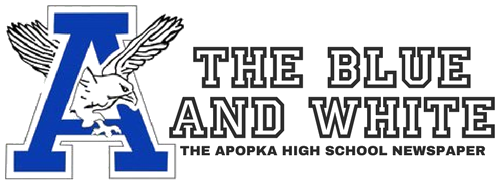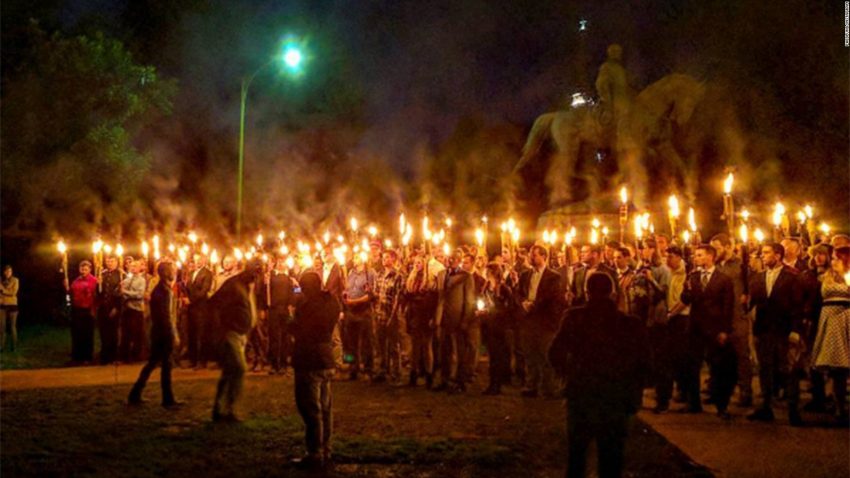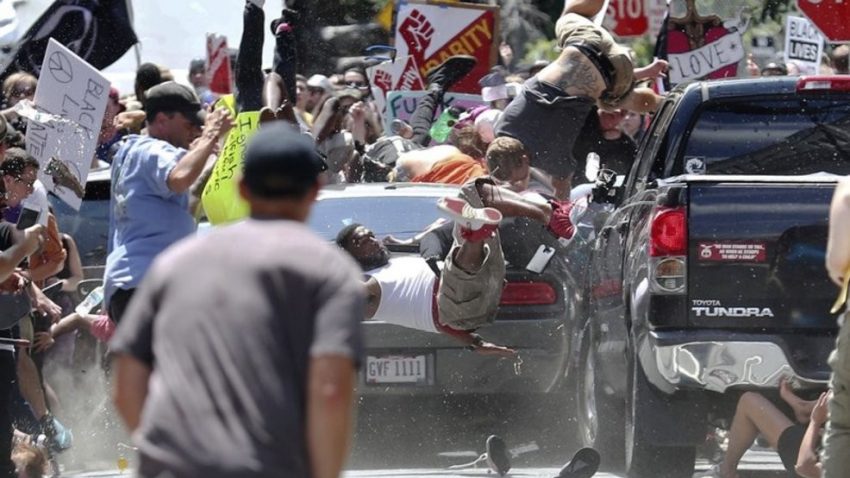By: Isabelle Lounsberry and Jordan Jenkins
For many Americans, an idealized vision of the future of our country is one defined by a “post-racial” society – or one that has negated racial and societal labels in favor of true equality. For others, this vision is the inevitable fate of our society as we continue to progress. Some in our country, however, hope that such a vision of the future never comes to fruition. These movements and sects dedicated to the promotion of division and prejudice have seen a boost in prominence recently, having found havens and platforms on the internet. The “Unite the Right” rally that occurred last month was both an accumulation of the beliefs espoused by these groups and a wake-up call to the realities of hate for both a community and a country.
The aforementioned “Unite the Right” rally refers to a collection of multiple events that took place on August 11 and 12 in Charlottesville, Virginia. For those unaware of the incident, here’s a quick rundown:
It all started with the city of Charlottesville’s plan to relocate a statue honoring Confederate general Robert E. Lee. The statue, which sits in the city’s central and recently renamed Emancipation Park, had been erected at the height of the Jim Crow era and was the subject of a heated debate in Charlottesville for months prior. Its relocation had also been slowed by state laws governing the modification of historical monuments.
The Friday night torchlit march (via CNN)
This left plenty of time for a loose coalition of white nationalist and neo-nazi leaders to plan a rally that would not only show their support of the statue and what they believed it to stand for, but also be a show of force for their movement. With the recent white nationalist movement, which is often termed as the “alt-right,” existing nearly entirely online, the intent of the rally – as the name implied – was to unite the various far-right and white supremacist causes across the country into a singular, tangible movement.
The event began on the night of August 11, when hundreds of white nationalist armed with tiki torches and weapons, stormed onto the campus of the University of Virginia. Although school was out at the time, they still faced vocal opposition from the few students and faculty that were there. This quickly broke out into brawls – including one where a librarian was attacked and went on to have a stroke as a result.
This was only a glimpse of things to come. On the following day, white nationalists arrived early with makeshift weapons, shields, and even guns in tow. They were met by a gathering of counter-protesters who included groups ranging from peaceful clergy people to more militant anti-fascist and anti-racists groups.
Things quickly turned sour, with brawls breaking out in the streets and police quickly moving in to break up the rally before it even officially began. A local state of emergency was soon declared. This move, however, did not stop these events from eventually turning deadly. After the rally had been shut down, James Alex Fields Jr., a white supremacist who traveled from Ohio to participate in the rally, drove his vehicle into a crowd of counter-protesters, killing Heather Heyer, 32, and injuring nineteen others. Two police officers were also killed in a helicopter crash as they monitored the scene.
The moment when James Alex Fields Jr. rammed his car into counter-protesters (Ryan M. Kelly via AP)
While the event had been planned for some time and law enforcement had planned for crowds of hundreds coming from across the country, the extent to which individuals came armed and willing to commit violence put them off guard. In the end, the events in Charlottesville ended up being the largest, and most violent, white supremacist gatherings in decades.
The national outpouring of reactions to the events in Charlottesville was immediate and intense. Many people were dismayed that such an open display of bigotry could take place in modern America. Others, however, were frustrated by the systems that allowed it to take place. Without a doubt, anger and sadness consumed a majority of the conversation surrounding the event.
In the immediate aftermath of the rally, many corners of the internet rallied together to retaliate, largely through identifying – or “doxing” – many of those who attended the rally and engaged in violence during it. Given the publicized nature of both the torch-lit march and the following rally, hundreds of photos of individual attending the events were taken. Eventually, these were distributed across many platforms of the internet and in the press, leading to many of them being named by those who knew them.
Take the case of Peter Cvjetanovic of Reno, Nevada, who–after traveling over 2,500 miles to participate in the rally–made the mistake of being the primary subject of a photograph that went on to be one of the most widely-shared images from the event. His classmates at University of Nevada, Reno, later identified him as an individual who frequently espoused anti-Semitic and pro-Hitler views.
Cvjetanovic, however, is an outlier in the sense that he faced essentially no structural repercussions for his actions, with his university refusing to expel him or fire him from his on-campus job. Many of those identified as being in the rally lost their jobs, while others who were documented engaging in violence ended up arrested. In one case, a rally attendee was disowned by his family.
“I feel like that is an extremely appropriate response,” said AHS Senior Elizabeth Tate on the subject, stating that “if someone is going to be endangering the lives of others and preaching hate speech they need to be ready to accept the consequences of their actions.” She believes that where legal action cannot discourage racial hatred and bigotry, societal action should.
People all over the country also organized counter-protests to rebuke the views that had been espoused at the “Unite the Right” and subsequent events. In Boston, for example, a planned “free speech” rally–which was headlined by some of those who had been scheduled to speak at the rally in Charlottesville–was dwarfed by counter-protests all across the city. An estimated 40,000 people attended. In Charlottesville proper, however, gatherings took a more somber tone. At the University of Virginia, thousands of students and faculty gathered for a candlelit vigil. Similar events were held in the city in remembrance of Heather Heyer, the 32-year-old counter-protester who had been killed in the car attack.
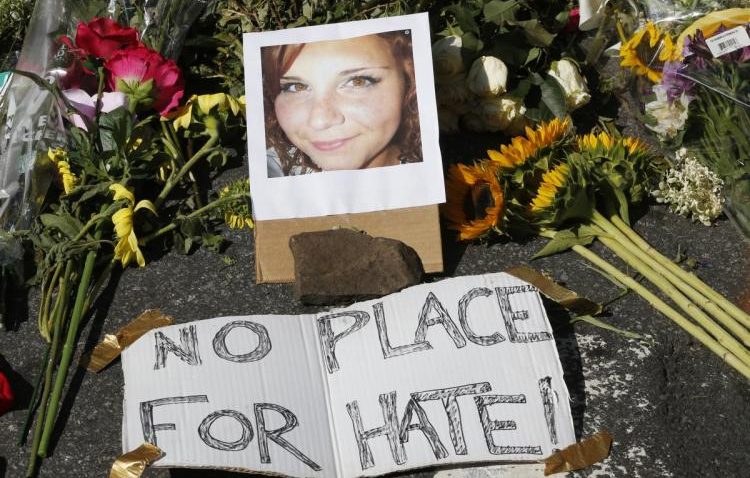 A makeshift memorial dedicated to Heather Heyer in Charlottesville (Steve Helber via AP)
A makeshift memorial dedicated to Heather Heyer in Charlottesville (Steve Helber via AP)
Seeing as the planned removal of Charlottesville’s statue of Robert E. Lee, a leading Confederate general during the Civil War, was the stated reason for the violent white nationalist rallies within the community, the post-Charlottesville outrage quickly turned toward to the many Confederate monuments.
While President Trump spoke repeatedly in defense of Confederate monuments in the aftermath of Charlottesville, that did not stop cities from across the country from moving to have their monuments removed. Both Gainesville and Baltimore had relocated their monuments by the Monday following the rally, citing concerns about safety and the potential for confrontation. Other cities, such as Lexington, announced initiatives to do so, as well.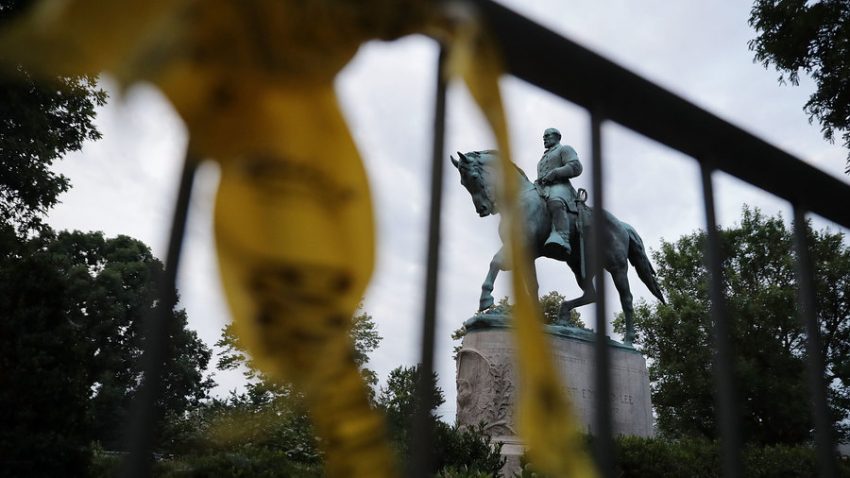
In other situations, anger at the monuments circumvented traditional government processes entirely, such as in Durham, where an angry group of protesters gathered around a statue honoring Confederate soldiers on Monday evening and ended up pulling it down.
Charlottesville-related controversy befell President Trump, as well. With many of the Charlottesville rally-goers exalting Trump with their rhetoric and symbols, many turned to him for a response. His statements, however, were a subject of debate to say the least. First, Trump responded with a speech, including saying it was an “egregious display of hatred, bigotry, and violence, on many sides.” While he’s not wrong that there was violence on both sides, many people felt that he was attempting to draw an equivalence between the white nationalists and those countering them.
In response, Apopka High School Senior Jeanine Carryl says that “Yes there was hatred on both sides, but it’s not hatred of the people, it’s hatred of the cause that they are trying to support.”
Others argue that Trump did an adequate job saying what needed to be said. Chris Hamilton, who is also a senior here at Apopka High School, stated that “There’s definitely something that needs to be condemned on one side more than the other, but he did a good job of handling it. Counter-violence is violence. Countering that only leads to more violence. It’ll never solve it.”
Trump later said that “Racism is evil…those who cause violence in its name are criminals and thugs, including the KKK, neo-nazis, white supremacists and other hate groups that are repugnant to everything we hold dear as Americans.” While many accepted this response, which seemed to express a change in tone, days later he had reverted to and doubled down on his original statement, blaming the “alt-left” and claiming there were “fine people” on both sides.
Steve Bannon, who was a chief strategist to President Trump and serves as the current Editor-In-Chief to Breitbart News (a news source he himself described as being a platform for the “alt-right”), was forced from his position in the White House in the aftermath of Charlottesville. This is just one of the many immediate results of the “Unite the Right” rally, although the long-term consequences of this event and the reactions to it have yet to be fully realized. It is clearly seen, though, that fundamental questions about who we are and our future have been raised.
